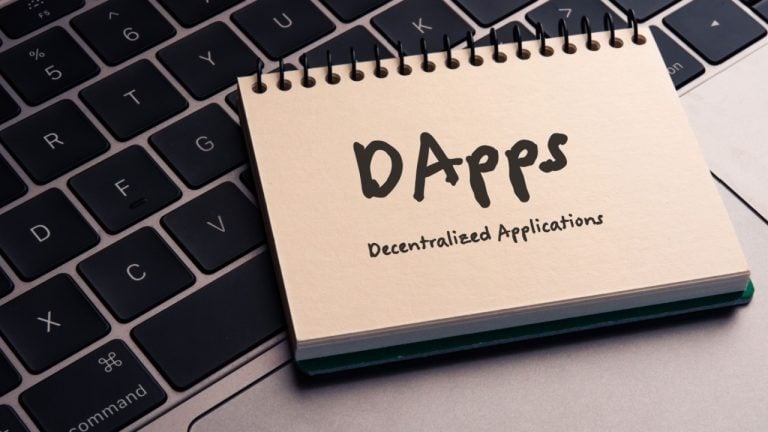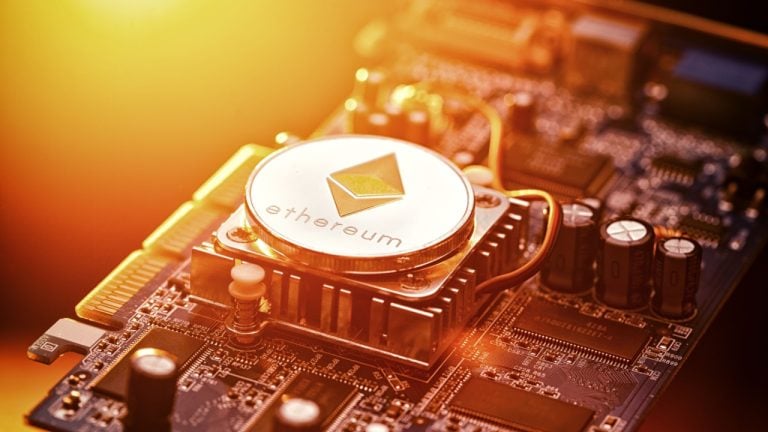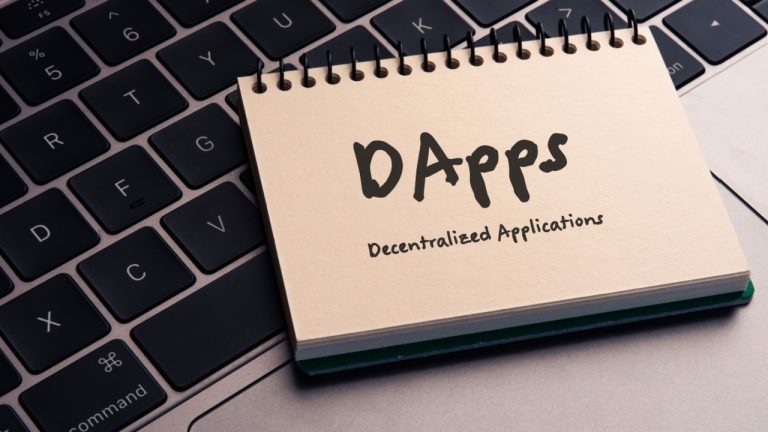 More than 250 Zambian university students recently participated in an online boot camp and hackathon which saw over 100 earning certification in smart contract development. The students who complete their minimum viable products (MVPs) can apply for grants ranging from $1,000 to $25,000. Students Trained in Decentralized Application Development More than 250 students from St. […]
More than 250 Zambian university students recently participated in an online boot camp and hackathon which saw over 100 earning certification in smart contract development. The students who complete their minimum viable products (MVPs) can apply for grants ranging from $1,000 to $25,000. Students Trained in Decentralized Application Development More than 250 students from St. […] According to Shahaf Bar-Geffen, CEO of the privacy-centric Layer 2 network COTI, enterprises and mainstream organizations are not yet fully convinced of the benefits of complete privacy or true anonymity in any system. Bar-Geffen said the primary reason for this is that such systems often get exploited by individuals with dishonest intentions. Regulators’ Perceptions of […]
According to Shahaf Bar-Geffen, CEO of the privacy-centric Layer 2 network COTI, enterprises and mainstream organizations are not yet fully convinced of the benefits of complete privacy or true anonymity in any system. Bar-Geffen said the primary reason for this is that such systems often get exploited by individuals with dishonest intentions. Regulators’ Perceptions of […] Composable data, a flexible and modular approach in the field of data analytics, benefits decentralized application (dapp) developers constrained by the limitations of current data protocols. Swaroop Hegde, co-founder of Powerloom, explains that composable data maintains a decentralized database of data points verified through a consensus mechanism. Clean Insights Versus Actionable Intelligence Hegde, a thought […]
Composable data, a flexible and modular approach in the field of data analytics, benefits decentralized application (dapp) developers constrained by the limitations of current data protocols. Swaroop Hegde, co-founder of Powerloom, explains that composable data maintains a decentralized database of data points verified through a consensus mechanism. Clean Insights Versus Actionable Intelligence Hegde, a thought […] The recent surge in Ethereum gas fees can be attributed to the rise in decentralized finance (defi) activity and the growing popularity of layer 2 (L2) chains such as Arbitrum and Optimism, Ken Timsit, managing director of Cronos Labs, has said. Timsit however agreed that the recent Dencun upgrade to the Ethereum network has helped […]
The recent surge in Ethereum gas fees can be attributed to the rise in decentralized finance (defi) activity and the growing popularity of layer 2 (L2) chains such as Arbitrum and Optimism, Ken Timsit, managing director of Cronos Labs, has said. Timsit however agreed that the recent Dencun upgrade to the Ethereum network has helped […] According to Mai Fujimoto, a Japanese crypto influencer and co-founder of Intmax, the Ethereum Improvement Proposal (EIP) 4844 – also known as proto-danksharding – have emerged as a solid solution for addressing the Ethereum network’s scalability challenges. The EIP 4844 is also significant for scaling solutions such as zero-knowledge rollups (zkrollups) and Layer 2 chains […]
According to Mai Fujimoto, a Japanese crypto influencer and co-founder of Intmax, the Ethereum Improvement Proposal (EIP) 4844 – also known as proto-danksharding – have emerged as a solid solution for addressing the Ethereum network’s scalability challenges. The EIP 4844 is also significant for scaling solutions such as zero-knowledge rollups (zkrollups) and Layer 2 chains […] Contrary to the perception that decentralized applications (dapps) are unstoppable, many are “reliant on centralized middleware components in the extreme.” James Bayly, COO at Subquery, argues that such an overreliance on centralized middleware components or their providers “completely undermines [the] supposedly decentralized applications and networks.” The Value of Centralization in Web3 However, in his written […]
Contrary to the perception that decentralized applications (dapps) are unstoppable, many are “reliant on centralized middleware components in the extreme.” James Bayly, COO at Subquery, argues that such an overreliance on centralized middleware components or their providers “completely undermines [the] supposedly decentralized applications and networks.” The Value of Centralization in Web3 However, in his written […] Particle Network has introduced its modular Layer 1 solution for chain abstraction and universal accounts, aimed at simplifying user interactions across multiple blockchains. The design of this modular Layer 1 makes it an ideal tool for both new and existing ecosystems to leverage. Particle Network plans to launch its Testnet and V1 Mainnet in the […]
Particle Network has introduced its modular Layer 1 solution for chain abstraction and universal accounts, aimed at simplifying user interactions across multiple blockchains. The design of this modular Layer 1 makes it an ideal tool for both new and existing ecosystems to leverage. Particle Network plans to launch its Testnet and V1 Mainnet in the […]
A rival of blockchain oracle provider Chainlink (LINK) is announcing a new airdrop for over 160 decentralized applications (Dapps). In a new blog post, data aggregating service Pyth Network (PYTH) says that it is launching the second phase of its Retrospective Airdrop plan, which gives all Dapps using data provided by Pyth free tokens. “Readers […]
The post Chainlink Challenger Pyth Network Announces New Airdrop for Over 160 Dapps appeared first on The Daily Hodl.

Crypto firm Ledger is warning users about a crucial exploit, urging them to pause their hardware wallet interactions with decentralized applications (DApps). In a new thread on the social media platform X, Ledger says that it has found, identified, and replaced a malicious version of its connect kit, a piece of code used to connect […]
The post Ledger Hardware Wallet Announces Critical Security Vulnerability, Urges Users To Pause Interacting With DApps appeared first on The Daily Hodl.

Ether price struggles amid regulatory concerns and a drop in DApp usage.
Ether (ETH) is struggling to maintain the $2,000 support as of Nov. 27, following its third unsuccessful attempt in 15 days to surpass the $2,100 mark. This downturn in Ether's performance comes as the broader cryptocurrency market sentiment deteriorates, thus one needs to analyze whether
It’s possible that recent developments, such as the U.S. Department of Justice (DOJ) signaling potential severe repercussions for Binance founder Changpeng “CZ” Zhao, have contributed to the negative outlook.
In a filing on Nov. 22 to a Seattle federal court, U.S. prosecutors sought a review and reversal of a judge’s decision permitting CZ to return to the United Arab Emirates on a $175-million bond. The DOJ argues that Zhao poses an “unacceptable risk of flight and nonappearance” if allowed to leave the U.S. pending sentencing.
The recent $46 million KyberSwap exploit on Nov. 23 has further dampened demand for decentralized finance (DeFi) applications on Ethereum. Despite being previously audited by security experts, including a couple in 2023, the incident has heightened concerns about the safety of the overall DeFi industry. Fortunately for investors, the attacker expressed willingness to return some of the funds, yet the event underscored the sector's vulnerabilities.
Additionally, investor confidence was shaken by a Nov. 21 blog post from Tether, the firm behind the $88.7 billion stablecoin USD Tether (USDT). The post announced the U.S. Secret Service's recent integration into its platform and hinted at forthcoming involvement from the Federal Bureau of Investigation.
The lack of details in the announcement has led to speculation about an increasingly stringent regulatory landscape for cryptocurrencies, especially with Binance facing heightened scrutiny and Tether's closer collaboration with authorities. These factors are likely contributing to Ether's underperformance, with various on-chain and market indicators suggesting a decline in ETH demand.
Ether exchange-traded products (ETPs) saw only a $34 million inflow in the last week, according to CoinShares. This figure is a modest 10% of the inflow seen by equivalent Bitcoin (BTC) crypto funds during the same period. The competition between the two assets for spot exchange-traded fund (ETF) approval in the U.S. makes this disparity particularly noteworthy.
Moreover, the current 7-day average annualized yield of 4.2% on Ethereum staking is less appealing compared to the 5.25% return offered by traditional fixed-income assets. This disparity led to a significant $349 million outflow from Ethereum staking in the previous week, as reported by StakingRewards.
High transaction costs continue to be a challenge, with the seven-day average transaction fee standing at $7.40. This expense has adversely affected the demand for decentralized applications (DApps), leading to a 21.8% decline in DApps volume on the network in the last week, as per DappRadar.

Notably, while most Ethereum DeFi applications saw a significant drop in activity, competing chains like BNB Chain and Solana experienced an 11% increase and stable activity, respectively.
Related: Changpeng Zhao may not leave the US pending court review, says judge
Consequently, Ethereum network protocol fees have decreased for four consecutive days, amounting to $5.4 million on Nov. 26, compared to a daily average of $10 million between Nov. 20 and Nov. 23, as reported by DefiLlama. This trend could potentially create a negative spiral, driving users towards competing chains in search of better yields.
Ether's current price pullback on Nov. 27 reflects growing concerns over regulatory challenges and the potential impact of exploits and sanctions on stablecoins used in DeFi applications.
The increasing involvement of the DOJ and FBI with Tether elevates the systemic risk for liquidity pools and the entire oracle-based pricing mechanism. While there's no immediate cause for panic selling or fears of a drop to $1,800, the lackluster demand from institutional investors, as indicated by ETP flows, is certainly not a positive sign for the market.
This article is for general information purposes and is not intended to be and should not be taken as legal or investment advice. The views, thoughts, and opinions expressed here are the author’s alone and do not necessarily reflect or represent the views and opinions of Cointelegraph.